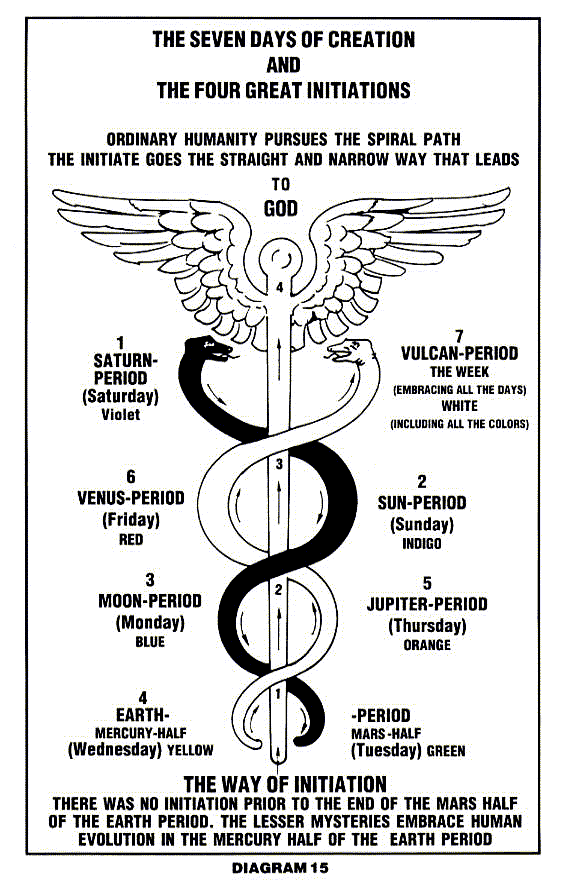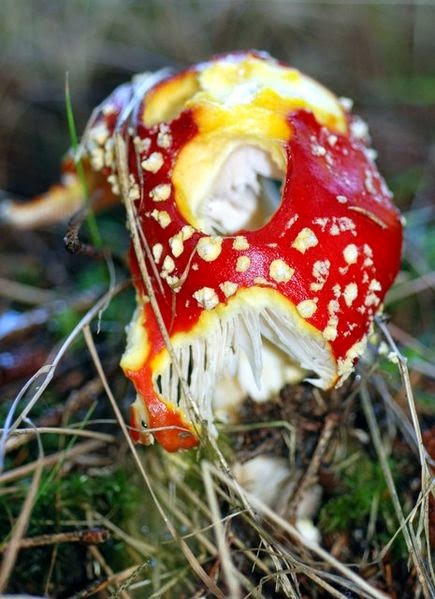Was Dracula a Mushroom eater?
Connecting some dots
The other day there was an article about researchers finding Vlad the Impaler's, or Dracula's tomb. And I saw some things that got me thinking.
http://news.discovery.com/history/draculas-tomb-found-in-italy-er-not-really-140617.htm
I noticed that Vlad was a secret society member, know as Order of the Dragon. The order was based on protecting Christianity: and they wore an emblem with the Ouroboros on it. Consider that the Order of the Dragon was created to resists the Ottoman Empire's expansion into Europe.
The Order of the Dragon (Latin: Societas Draconistarum, lit. "Society of the Dragonists") was a monarchical chivalric order for selected nobility,[1]founded in 1408 by Sigismund, King of Hungary (r. 1387–1437) and later Holy Roman Emperor (r. 1433–1437). It was fashioned after the military ordersof the Crusades, requiring its initiates to defend the cross and fight the enemies of Christianity, in particular the Ottoman Turks.
The main goal of the society was to:
to crush the pernicious deeds of the same perfidious Enemy, and of the followers of the ancient Dragon, and (as one would expect) of the pagan knights, schismatics, and other nations of the Orthodox faith, and those envious of the Cross of Christ, and of our kingdoms, and of his holy and saving religion of faith, under the banner of the triumphant Cross of Christ.. Wikipedia
When we consider the what Dracula means:
Historically, the name "Dracula" is derived from a Chivalric order called the Order of the Dragon, founded by Sigismund of Luxembourg (then king ofHungary) to uphold Christianity and defend the Empire against the Ottoman Turks. Vlad II Dracul, father of Vlad III, was admitted to the order around 1431, after which Vlad II wore the emblem of the order and later, as ruler of Wallachia, his coinage bore the dragon symbol. The name Dracula means "Son of Dracul".
While Bram Stroker's novel Dracula is loosely based on the real life character of Vlad the Impaler, it is just that loosely based. For instance it leaves out the part that Vlad was taken prisoner, and while imprisoned, his father and brother were killed by their fellow noblemen; thus, setting the stage for the young Vlad to avenge their deaths, and wage a bloody war against the Ottoman Empire. I am not saying the guy was not brutal, just that he had an ax to grind.
Consider the following portrait of Vlad, and notice the red and white motif of his outfit.
 |
| Vlad |
The red and white cap is similar to mitres or hats worn by popes, bishops, and Santa Claus.
The red and white cap of Santa and the Roman Catholic church has been associated with the mushroom Amanita muscaria. And in addition to the red and white cap pictured on Vlad, was the emblem worn by the order, the Ouroboros:
The Ouroboros was an ancient symbol, going al the way back to Ancient Greece, where Plato mentions it.
Consider that Plato suggested that it was the first living thing, and it was circular:The Ouroboros or Uroboros (/jʊərɵˈbɒrəs/; /ɔːˈrɒbɔrəs/, from the Greek οὐροβόρος ὄφις tail-devouring snake) is an ancient symbol depicting a serpentor dragon eating its own tail.The Ouroboros often symbolizes self-reflexivity or cyclicality, especially in the sense of something constantly re-creating itself, the eternal return, and other things such as the phoenix which operate in cycles that begin anew as soon as they end. It can also represent the idea of primordial unity related to something existing in or persisting from the beginning with such force or qualities it cannot be extinguished. While first emerging in Ancient Egypt, the Ouroboros has been important in religious and mythological symbolism, but has also been frequently used in alchemical illustrations, where it symbolizes the circular nature of the alchemist's opus. It is also often associated with Gnosticism, and Hermeticism. Wikipedia
Plato described a self-eating, circular being as the first living thing—the universe as an immortal, mythologically constructed entity.
And again it appears in the Middle-ages via Order of the Dragon, and the mystical art of alchemy.The living being had no need of eyes because there was nothing outside of him to be seen; nor of ears because there was nothing to be heard; and there was no surrounding atmosphere to be breathed; nor would there have been any use of organs by the help of which he might receive his food or get rid of what he had already digested, since there was nothing which went from him or came into him: for there was nothing beside him. Of design he created thus; his own waste providing his own food, and all that he did or suffered taking place in and by himself. For the Creator conceived that a being which was self-sufficient would be far more excellent than one which lacked anything; and, as he had no need to take anything or defend himself against any one, the Creator did not think it necessary to bestow upon him hands: nor had he any need of feet, nor of the whole apparatus of walking; but the movement suited to his spherical form which was designed by him, being of all the seven that which is most appropriate to mind and intelligence; and he was made to move in the same manner and on the same spot, within his own limits revolving in a circle. All the other six motions were taken away from him, and he was made not to partake of their deviations. And as this circular movement required no feet, the universe was created without legs and without feet.[6][7] Wikipedia
In alchemy, it represents the spirit of Mercury (the substance that permeates all matter), and symbolizes continuous renewal (a snake is often a symbol of resurrection, as it appears to be continually reborn as it sheds its skin.), the cycle of life and death, and harmony of opposites. As a symbol of the eternal unity of all things, the cycle of birth and death from which the alchemist sought release and liberation. It unites opposites: the conscious and unconscious mind. Alchemically, the ouroboros is also used as a purifying glyph. http://www.tokenrock.com/explain-ouroboros-70.html
So this one symbol which goes all the way back to Ancient Egypt and continues through the Middle ages has been identified by many researchers: Jan Irving, Clark Heinrich, myself, as the mushroom Amanita muscaria. Amanita muscaria mushrooms have a mycorrhizal relationship with pine trees, and can be found among the fallen brown pine needles. The mushroom itself is bright red, perhaps appearing as if on fire; Moses and the Burning Bush. Then as the elements take their toll on the mushroom, it disintegrates back into the pine needles and resembles ash, as if something had burned there. And later when conditions are right, the mushroom will grow back in the same spot, repeating the cycle.
So I was just thinking that maybe the blood that Vlad drank was just another allegory for his ritualistic use of the mushroom. I realize this is a stretch , but stranger things have proven to be true.










_-_Google_Art_Project.jpg)
.JPG)











.png)

.jpg)

















